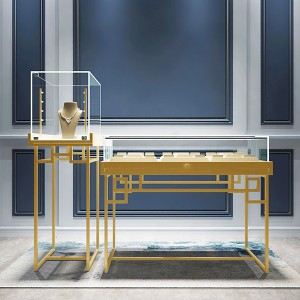نويابىر . 03, 2024 01:17 Back to list
mannequins
The Evolution of Mannequins An Icon of Fashion and Retail
Mannequins have long been an integral part of the retail industry, serving not only as display tools but also as silent ambassadors of fashion. These lifelike figures may seem like simple models showcasing clothing, yet their evolution reflects significant changes in design, technology, and cultural trends over the decades.
Originally, mannequins were rudimentary figures made from wood or wire, often lacking any realistic features. Their primary function was to provide a form for garments, allowing customers to visualize clothing in a more appealing way. As fashion began to gain momentum in the late 19th and early 20th centuries, mannequins evolved from basic shapes to more sophisticated representations of the human form. This shift coincides with the rise of the department store, where mannequins played a crucial role in attracting customers and enhancing the shopping experience.
The 1920s marked a glamorous era for mannequins. Designers introduced more lifelike figures, incorporating realistic facial features and intricate details. This attention to realism was a game-changer, as it allowed shoppers to connect emotionally with the clothing displayed. The Art Deco movement influenced the design of mannequins, giving them a stylish and elegant appearance that matched the fashions of the time. Retailers began to use mannequins for elaborate window displays, showcasing not only the latest designs but also the lifestyle associated with them.
mannequins

As we moved into the mid-20th century, the popularity of mannequins surged, driven by the post-war economic boom and the advent of consumerism. The iconic fashion mannequin emerged, often representing the idealized female form with exaggerated proportions. These figures became synonymous with modeling and were frequently employed in high-fashion boutiques and department stores. This period also saw the introduction of flexible mannequins, which allowed for poses that depicted motion and life, further enhancing the shopper's visual experience.
The late 20th century and early 21st century brought significant technological advancements that transformed the world of mannequins. The advent of digital technology led to the creation of animated and interactive mannequins capable of changing their appearances or even communicating with customers. Retailers began to explore augmented and virtual reality, using mannequins to create immersive shopping experiences. This integration of technology opened new avenues for creativity in merchandising, allowing brands to engage consumers in novel ways.
Today, the fashion industry is witnessing a shift towards inclusivity and diversity. Mannequins now embody various body types, ethnicities, and gender identities. This change reflects society's growing demand for representation and authenticity in fashion. Brands increasingly recognize the importance of connecting with a broader audience, leading to the creation of mannequins that resonate with various consumer demographics.
In conclusion, mannequins have evolved from simple display tools to dynamic symbols of fashion and culture. Their development mirrors changes in societal values, aesthetics, and technological progress. As we look to the future, mannequins will continue to adapt, playing a pivotal role in shaping the retail experience and redefining the way we perceive fashion. Their silent presence will always remind us of the ever-changing landscape of style and consumer culture.
-
The Benefits of Electronic Shelf Labels for Modern Stores
NewsJul.01,2025
-
Space-Saving Retail Store Furniture Designs for Small Shops
NewsJul.01,2025
-
Slatwall vs. Gridwall: Which Store Fixture is Right for Your Business?
NewsJul.01,2025
-
Shop Fittings: Essential Elements for a Functional Retail Space
NewsJul.01,2025
-
How to Design a Minimalist Cosmetic Shop Display
NewsJul.01,2025
-
Creative Clothes Shop Display Ideas to Attract More Customers
NewsJul.01,2025


















































































































